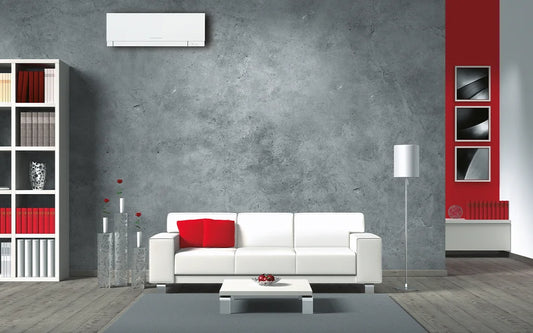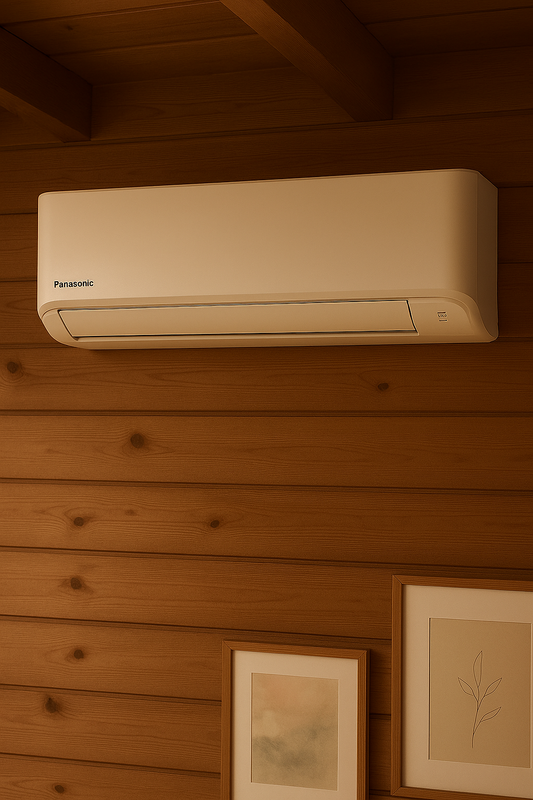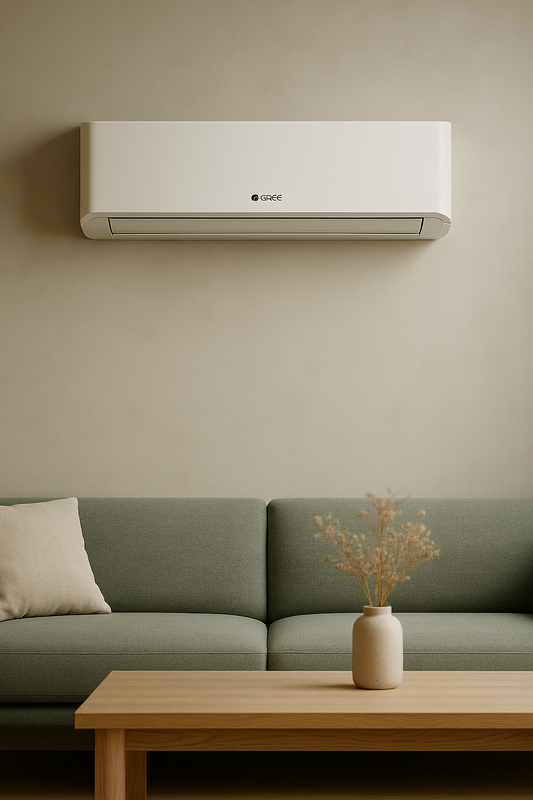Luftvärmepump installera: Effektiv och Miljövänlig Uppvärmning
Att installera en luftvärmepump är ett populärt sätt att effektivt och miljövänligt värma upp bostäder och andra utrymmen. Denna teknologi har blivit allt mer eftertraktad tack vare dess förmåga att dra nytta av naturliga energikällor och dess låga miljöpåverkan. I denna artikel kommer vi att undersöka processen att installera en luftvärmepump, dess fördelar och användningsområden, samt relaterade tekniker och vanliga frågor.
Definition och Bakgrund
En luftvärmepump är en anordning som använder utomhusluftens värmeenergi för att värma upp utrymmen inomhus. Genom att utnyttja den termiska energin i luften kan luftvärmepumpen förse bostäder med värme under kalla perioder och även fungera som luftkonditionering under varma perioder. Denna teknik har funnits i flera decennier men har fått ökad uppmärksamhet tack vare dess miljövänliga och energieffektiva egenskaper.
Fördelar och Användningsområden
Att installera en luftvärmepump erbjuder flera fördelar. En av de mest uppenbara fördelarna är dess energieffektivitet. Genom att dra nytta av den befintliga energin i utomhusluften, kan luftvärmepumpen producera fler enheter värmeenergi än den förbrukar i elektricitet. Dessutom minskar användningen av fossila bränslen, vilket resulterar i en lägre koldioxidutsläpp och minskad miljöpåverkan.
Luftvärmepumpar är också mångsidiga och kan användas för att värma upp både bostäder och kommersiella utrymmen. Denna flexibilitet gör dem till ett populärt val för olika typer av fastigheter. Dessutom kan vissa modeller även erbjuda kylning under varma perioder, vilket ger en helårsanvändning av teknologin.
Relaterade Tekniker, Begrepp eller Variationer
Det finns flera variationer av luftvärmepumpar, inklusive luft-vatten och luft-luftvärmepumpar. Luft-vattenpumpar använder utomhusluften för att värma upp vatten som sedan cirkulerar genom ett värmesystem inomhus. Å andra sidan använder luft-luftvärmepumpar utomhusluften för att direkt värma eller kyla luften inomhus. Beroende på specifika behov och fastighetens egenskaper kan olika variationer vara mer lämpliga.
Vanliga Frågor (FAQ)
-
Är luftvärmepumpar effektiva i kalla klimat?
Ja, moderna luftvärmepumpar är utformade för att fungera effektivt även i kalla klimat och kan producera tillräckligt med värmeenergi för att värma upp bostäder även under extrema temperaturer. -
Hur påverkar installationen av en luftvärmepump mitt energiförbrukning?
Genom att använda naturlig energi från utomhusluften minskar luftvärmepumpar behovet av fossila bränslen, vilket kan leda till betydande besparingar på energiräkningen. -
Finns det några miljömässiga fördelar med att installera en luftvärmepump?
Ja, luftvärmepumpar minskar användningen av fossila bränslen och därmed minskar koldioxidutsläppen, vilket minskar den totala miljöpåverkan. -
Hur lång tid tar det att installera en luftvärmepump?
Installationsprocessen varierar beroende på fastighetens specifika behov och den valda modellen av luftvärmepump. Generellt sett kan installationen ta några dagar att slutföra med hjälp av professionella installatörer.
Sammanfattning
Att installera en luftvärmepump är en effektiv och miljövänlig metod för att värma upp bostäder och kommersiella utrymmen. Genom att dra nytta av den naturliga energin i utomhusluften, erbjuder luftvärmepumpar energieffektiva och mångsidiga uppvärmningslösningar. Med olika variationer och fördelar kan luftvärmepumpar vara ett attraktivt alternativ för fastighetsägare som strävar efter att minska sin miljöpåverkan och energiförbrukning.
Installation Process
The process of installing a air source heat pump involves several key steps. First, a site survey is conducted to assess the suitability of the property for the installation. This includes evaluating the available outdoor space for the placement of the heat pump unit and assessing the existing heating system. Once the site survey is complete, the installation team can proceed with positioning the outdoor unit, connecting it to the indoor unit, and integrating the heat pump with the existing heating system. Electrical connections and controls are also set up to ensure the proper functioning of the heat pump.
Energy Efficiency and Cost Savings
One of the significant advantages of air source heat pumps is their potential for energy savings. By harnessing ambient heat from the outdoor air, these systems can provide efficient heating without relying solely on electricity or fossil fuels. This can lead to reduced energy consumption and lower heating costs for homeowners and businesses. Additionally, many regions offer incentives or rebates for installing energy-efficient heating systems, further enhancing the cost-effectiveness of air source heat pumps.
Case Study: Residential Application
In a residential setting, the installation of an air source heat pump can have a transformative impact on heating and cooling expenses. For example, a homeowner in a moderate climate region replaced their traditional heating system with an air source heat pump. As a result, they experienced a significant decrease in their energy bills while maintaining a comfortable indoor environment throughout the year. This case study exemplifies the practical benefits of adopting air source heat pumps in residential properties.
Maintenance and Longevity
Proper maintenance is crucial for ensuring the optimal performance and longevity of air source heat pumps. Regular inspections, filter replacements, and professional servicing can help prevent issues and extend the lifespan of the system. By adhering to recommended maintenance schedules, homeowners and businesses can maximize the efficiency and durability of their air source heat pumps, ultimately contributing to long-term cost savings and sustainable operation.
Additional Considerations
When planning the installation of an air source heat pump, it's essential to consider factors such as noise levels, zoning regulations, and the visual impact of the outdoor unit. Some heat pump models operate quietly, making them suitable for residential areas, while others may require careful placement to minimize noise disturbances. Moreover, local building codes and zoning ordinances may dictate specific requirements for the installation of heat pumps. Lastly, the aesthetics of the outdoor unit should be taken into account to ensure it complements the property's appearance.
Enhanced Comfort and Air Quality
Beyond energy efficiency, air source heat pumps contribute to enhanced comfort and indoor air quality. These systems can provide consistent heating and cooling, eliminating temperature fluctuations and drafts often associated with traditional HVAC systems. Additionally, air source heat pumps can help dehumidify indoor air during the cooling mode, promoting a healthier and more comfortable living environment for occupants.
Industry Trends and Innovations
The field of air source heat pump technology continues to evolve, with ongoing advancements and innovations. Manufacturers are introducing smart heat pump models equipped with advanced controls and connectivity features, allowing users to optimize their heating and cooling settings remotely. Furthermore, research and development efforts are focused on increasing the seasonal efficiency of heat pumps, expanding their applicability to a broader range of climates and enhancing their overall performance.
Comparison with Geothermal Heat Pumps
While air source heat pumps utilize the heat from outdoor air, geothermal heat pumps extract heat from the ground or groundwater. Both technologies offer energy-efficient heating and cooling, but they differ in their installation requirements and initial costs. Geothermal heat pumps are often more expensive to install due to the need for underground loops, but they can provide even higher energy savings and may be more suitable for certain geographic locations.
Environmental Considerations
When evaluating the environmental impact of air source heat pumps, it's important to consider factors such as refrigerants used in the systems and their potential for noise pollution. Some heat pump models utilize environmentally friendly refrigerants with lower global warming potential, contributing to a reduced carbon footprint. Additionally, advancements in compressor and fan technologies have led to quieter operation, addressing concerns about noise emissions in residential and urban environments.
Integration with Renewable Energy Sources
Combining air source heat pumps with renewable energy sources, such as solar panels, can further enhance the sustainability of heating and cooling systems. By harnessing solar energy to power the heat pump or supplementing its operation, homeowners and businesses can reduce their reliance on grid electricity and fossil fuels, achieving a more comprehensive approach to environmental responsibility and energy independence.
Smart Controls and Monitoring
The integration of smart controls and monitoring systems enables users to optimize the performance of air source heat pumps. With features such as programmable schedules, remote access, and energy usage tracking, individuals can fine-tune their heating and cooling settings based on occupancy patterns and external conditions. This level of control promotes energy efficiency and personalized comfort, aligning with the growing demand for smart and connected home technologies.



